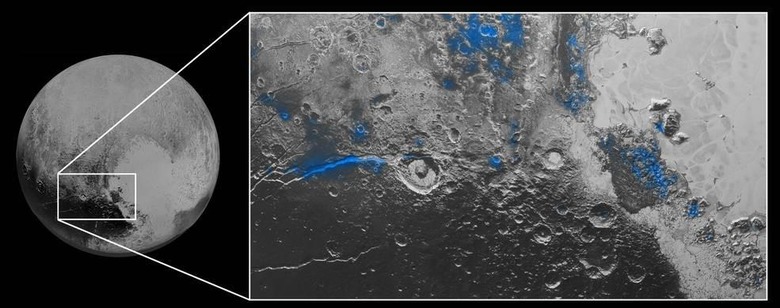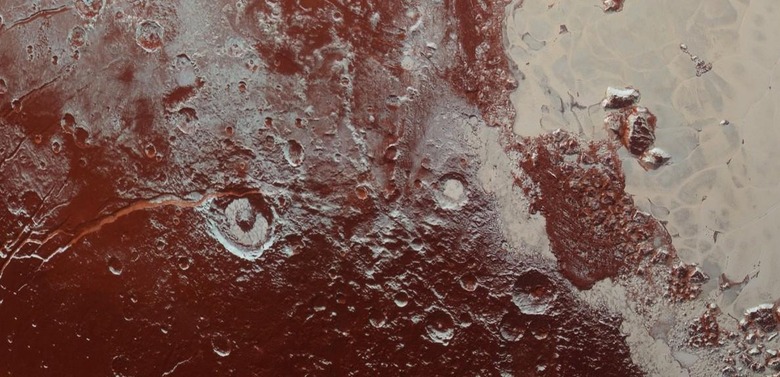Pluto's sky and ice revealed: blue and red
The sky on Pluto is blue, NASA showed the world today, and the ground has water ice. While other sorts of more "volatile" ices appear to mask the water ice found around the planet, some water ice can be seen in photos captured by New Horizons spacecraft earlier this year. Much of this water ice is surrounded by what NASA scientists call "reddish tholin colorants" on the surface of Pluto. Many of these photos are still arriving in the NASA labs for analyzation.
Spectral imagery shows places where ice water exist on the planet's surface. Oddly, many of these areas are shown in bright red in the most recent set of photos of the planet. "We don't yet understand the relationship between water ice and the reddish tholin colorants on Pluto's surface," said Silvia Protopapa, a NASA science team member from the University of Maryland, College Park. "I'm surprised that this water ice is so red."
Below you'll find an image of water ice on Pluto. Areas that contain exposed water ice are highlighted in blue – this is not the color these areas actually are when seen through our visible spectrum.

In other words – if we were on the planet's surface, we wouldn't see blue.

Instead we'd see red.
Below is one of the first full-color photo composites of Jupiter, showing the large amount of red areas covering the planet. This photo shows approximately the same area as the photo above with water marked in blue. You'll see the slightly lighter reds in these areas below.

You'll also find one of the first color images of Pluto's atmospheric hazes below (and at the head of this article). This image is shown in our visible spectrum and shows the skies of Pluto to be blue.
"Who would have expected a blue sky in the Kuiper Belt" said Alan Stern, New Horizons principal investigator from Southwest Research Institute (SwRI), Boulder, Colorado.
"It's gorgeous."

At its current position, the New Horizons spacecraft is approximately 3.1 billion miles (5 billion kilometers) from Earth. This craft continues to head outward and will never return to our planet. According to NASA, all signals indicate all systems aboard the craft are running healthy and operating normally.
And photos and scientific data continue to be transmitted.
